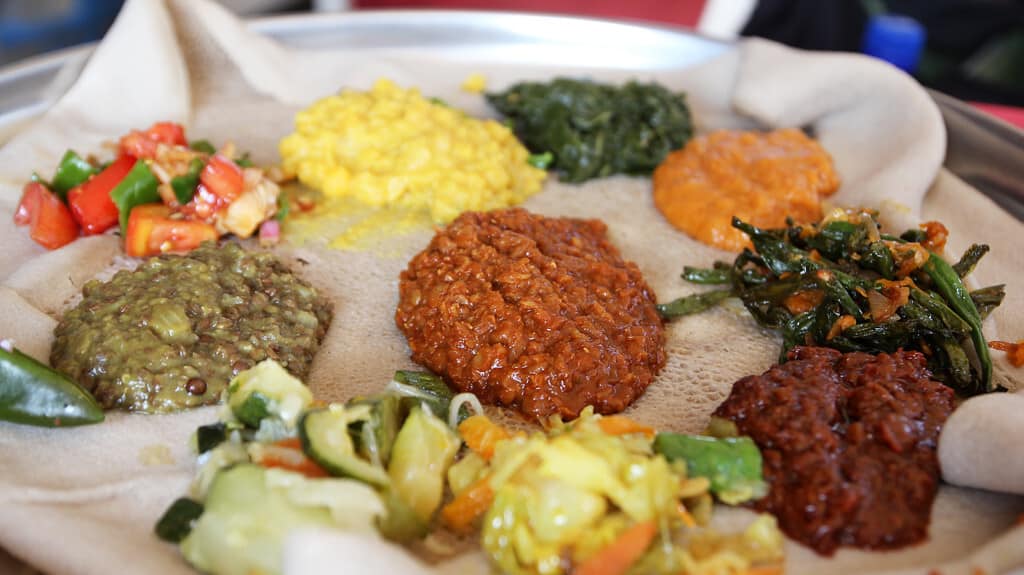
Ethiopian injera with veggie sides tutorial
What's the story
Injera is a staple in Ethiopian cuisine, characterized by its sourdough-risen, spongy texture. Made from teff flour, it's traditionally accompanied by vegetarian sides, offering a complete meal. This dish not only provides a glimpse into Ethiopia's culinary heritage but also suits vegetarian and eggless diets. Injera is more than food; it's an immersive cultural experience. Let's start cooking.
Ingredients list
Gather the following ingredients
For the injera: two cups teff flour, three cups water, and one-half teaspoon salt. For the veggie sides: two sliced carrots, one cup of trimmed green beans, one large chopped onion, two minced cloves of garlic, one teaspoon minced ginger, one teaspoon turmeric, one teaspoon paprika, and salt to taste. Cooking requires two tablespoons of olive oil.
Step 1
Preparing the injera batter
Mix teff flour and water in a large bowl until the mixture is smooth. Then, cover it with a clean cloth, allowing it to ferment at room temperature for two days. This fermentation process is essential for achieving the distinctive tangy flavor of injera. After fermentation, enhance the batter by stirring in half a teaspoon of salt for seasoning.
Step 2
Cooking the injera
Heat a non-stick pan over medium heat. Pour about half a cup of batter into the center of the pan; tilt the pan in a circular motion to spread the batter evenly into a thin layer. Cook until bubbles form on the surface and edges lift from the pan—about two to three minutes—then remove and let cool on a clean cloth.
Step 3
Preparing veggie sides
In a pan, heat olive oil over medium. Add onions and garlic, sauteing until translucent. Introduce carrots and green beans, along with ginger, turmeric, paprika, and season with salt to taste. Stir well, cooking until the vegetables are tender yet crisp, approximately five minutes. This process ensures the veggies are perfectly seasoned and cooked for serving.
Step 4
Serving suggestions
To serve Ethiopian style, lay injera on plates or a large platter as the base. Then, top each with the vegetable sides. This encourages guests or family to tear off pieces by hand, enjoying an authentic dining experience. This tutorial offers a journey through traditional Ethiopian injera with vegetarian sides, catering to eggless diets without sacrificing flavor or cultural authenticity.